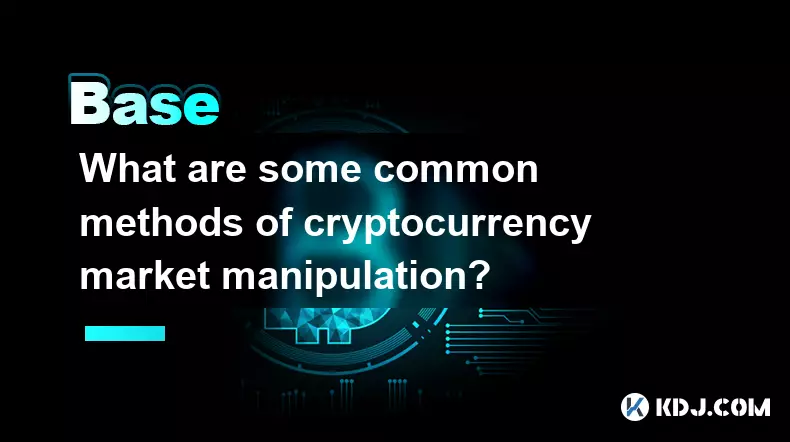-
 bitcoin
bitcoin $109523.663807 USD
-0.13% -
 ethereum
ethereum $4019.526508 USD
2.06% -
 tether
tether $1.000482 USD
0.00% -
 xrp
xrp $2.776815 USD
0.18% -
 bnb
bnb $958.942396 USD
0.12% -
 solana
solana $204.294698 USD
3.84% -
 usd-coin
usd-coin $0.999693 USD
0.00% -
 dogecoin
dogecoin $0.232115 USD
2.09% -
 tron
tron $0.338028 USD
0.84% -
 cardano
cardano $0.790920 USD
1.50% -
 hyperliquid
hyperliquid $44.871443 USD
5.60% -
 ethena-usde
ethena-usde $1.000322 USD
0.04% -
 chainlink
chainlink $21.034165 USD
2.60% -
 avalanche
avalanche $28.794831 USD
-0.54% -
 stellar
stellar $0.360466 USD
1.24%
What Is a Black Hat Hacker?
Black hat hackers pose a significant threat to cybersecurity, engaging in unauthorized system breaches for malicious purposes and causing financial losses, data breaches, and service disruptions.
Oct 23, 2024 at 10:30 am

A black hat hacker is an individual who intentionally breaches computer systems or networks without authorization to gain access to sensitive information or cause harm to the system or its users. They primarily use their skills for malicious purposes, such as stealing data, disrupting services, or profiting from cybercrimes.
2. Characteristics:- Motivated by financial gain, personal interests, or a desire to cause damage
- Highly skilled in computer programming, networking, and system administration
- Often have a deep understanding of software vulnerabilities and security measures
- Phishing attacks to steal login credentials or sensitive information
- Malware distribution through email, websites, or malicious links
- SQL injection to exploit database vulnerabilities and access sensitive data
- Denial-of-service (DoS) attacks to overload systems and disrupt services
- Man-in-the-middle (MitM) attacks to intercept communication and manipulate data
Black hat hackers can cause significant financial losses, data breaches, reputational damage, and service disruptions to businesses and organizations. They can also threaten national security and privacy by stealing or manipulating sensitive information.
5. Legal and Ethical Implications:Black hat hacking is illegal and subject to severe penalties under various cybercrime laws. It violates ethical norms and poses a threat to society.
6. Prevention and Mitigation:To prevent black hat hacking, organizations should implement robust cybersecurity measures, including:
- Strong password policies
- Multi-factor authentication
- Regular software updates
- Network segmentation
- Intrusion detection and prevention systems
- Security awareness training for employees
Black hat hackers often play a pivotal role in organized cybercrime syndicates. They provide tools, techniques, and expertise to cybercriminals for committing larger-scale attacks.
8. Distinction from Other Types of Hackers:- White hat hackers: Use their skills to identify and report vulnerabilities responsibly, assisting in improving system security.
- Gray hat hackers: Engage in activities that may violate ethical guidelines but do not primarily cause harm or disrupt systems.
- Script kiddies: Novice hackers who use pre-written scripts or tools to attack systems but may not have deep technical knowledge.
Disclaimer:info@kdj.com
The information provided is not trading advice. kdj.com does not assume any responsibility for any investments made based on the information provided in this article. Cryptocurrencies are highly volatile and it is highly recommended that you invest with caution after thorough research!
If you believe that the content used on this website infringes your copyright, please contact us immediately (info@kdj.com) and we will delete it promptly.
- BlockchainFX: The Crypto Presale Primed for a 2025 ROI Explosion
- 2025-09-27 18:25:19
- ETH Price Check: Smart Money Stays Cool Amidst ATH Rollercoaster
- 2025-09-27 18:25:19
- Aster Price, MrBeast, and DEX Volumes: What's the Buzz?
- 2025-09-27 18:45:11
- Shiba Inu, Meme Coins, and MAGACOIN FINANCE: What's Next?
- 2025-09-27 18:45:11
- Aster DEX: Navigating DeFi's Future with Price Predictions and Key Insights
- 2025-09-27 18:50:01
- Virtuals Protocol's New Genesis: A Deep Dive into the Launch and $VIRTUAL's Potential
- 2025-09-27 18:50:01
Related knowledge

What are some common methods of cryptocurrency market manipulation?
Sep 27,2025 at 02:55am
Wash Trading and Its Impact on Market Perception1. Wash trading involves an individual or entity simultaneously buying and selling the same cryptocurr...

How do I read a cryptocurrency whitepaper?
Sep 27,2025 at 05:54am
Understanding the Structure of a Cryptocurrency Whitepaper1. Begin by identifying the executive summary, which outlines the project’s core vision and ...

Can I recover lost cryptocurrency?
Sep 25,2025 at 08:18am
Understanding the Nature of Cryptocurrency Loss1. Cryptocurrency operates on decentralized networks, meaning there is no central authority to reverse ...

How do I choose a cryptocurrency investment strategy?
Sep 27,2025 at 03:55pm
Understanding Risk Tolerance in Crypto Investing1. Assessing personal risk tolerance is a foundational step when entering the cryptocurrency market. V...

How can I earn passive income from cryptocurrency?
Sep 23,2025 at 10:18am
Staking Cryptocurrencies for Regular Returns1. Many blockchain networks operate on a proof-of-stake (PoS) consensus mechanism, allowing users to earn ...

What are gas fees in cryptocurrency transactions?
Sep 26,2025 at 02:00am
Understanding Gas Fees in Blockchain Transactions1. Gas fees are payments made by users to compensate for the computing energy required to process and...

What are some common methods of cryptocurrency market manipulation?
Sep 27,2025 at 02:55am
Wash Trading and Its Impact on Market Perception1. Wash trading involves an individual or entity simultaneously buying and selling the same cryptocurr...

How do I read a cryptocurrency whitepaper?
Sep 27,2025 at 05:54am
Understanding the Structure of a Cryptocurrency Whitepaper1. Begin by identifying the executive summary, which outlines the project’s core vision and ...

Can I recover lost cryptocurrency?
Sep 25,2025 at 08:18am
Understanding the Nature of Cryptocurrency Loss1. Cryptocurrency operates on decentralized networks, meaning there is no central authority to reverse ...

How do I choose a cryptocurrency investment strategy?
Sep 27,2025 at 03:55pm
Understanding Risk Tolerance in Crypto Investing1. Assessing personal risk tolerance is a foundational step when entering the cryptocurrency market. V...

How can I earn passive income from cryptocurrency?
Sep 23,2025 at 10:18am
Staking Cryptocurrencies for Regular Returns1. Many blockchain networks operate on a proof-of-stake (PoS) consensus mechanism, allowing users to earn ...

What are gas fees in cryptocurrency transactions?
Sep 26,2025 at 02:00am
Understanding Gas Fees in Blockchain Transactions1. Gas fees are payments made by users to compensate for the computing energy required to process and...
See all articles









































































